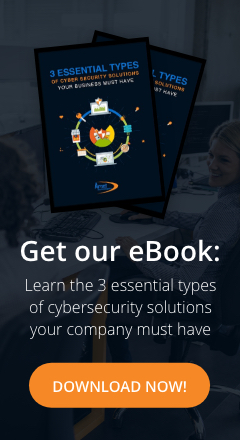Today, even just an hour of unexpected downtime can cost a business hundreds of thousands of dollars. That’s why having a carefully designed and regularly maintained business continuity plan is so important. Without an effective business continuity plan, there’s a good chance your organization will end up closing its doors for good if the worst does happen.
Disaster recovery (DR) and business continuity (BC) are often used interchangeably, but they aren’t quite the same thing. Nonetheless, they’re all part of an overarching strategy concerning the continued operation of your business processes following a disaster and the recovery of any digital assets, such as lost or stolen data or broken systems.
Here are five key considerations when tailoring a disaster-recovery plan that aligns with the unique needs of your company:
#1. Know where the risks lie
No two risk assessments look the same, which is why a generalized approach to DR and BC is practically worthless. This is more likely to be the case now that most businesses have far more complicated technology infrastructures than they used to. If you use a combination of cloud-hosted and on-premises systems, like many modern businesses, you need to know where your data resides, and which measures are in place to protect it. Conducting a thorough risk assessment is one of the biggest parts of the DR planning process, and it’s the only thing that will help you determine where vulnerabilities lie.
#2. Conduct an impact analysis
A business impact analysis (BIA) is a core component of your risk assessment that looks at all ‘what if’ scenarios. Again, because different businesses have different systems and assume varying levels of risk, every impact analysis is unique. Your BIA should be based on various key business metrics, such as financial impact, reputational impact, regulatory criticism, and estimated recovery time. You’ll need to look at all the possible events that might affect your business, such as fire, loss of a key member of staff, a data breach, or failing hardware.
#3. Assemble your team
No DR or BC plan is of any use without a clear definition of the roles your employees will play following an unexpected event. Everyone on your team needs to understand their roles and responsibilities. Your internal disaster-response team will be tasked with getting your systems back online and, where necessary, contacting the necessary third-party contracts like software vendors and hosting companies. You’ll also need to assign someone to inform your customers and the authorities in case of a data breach, which is a legal requirement in cases where personal information is stolen.
#4. Prioritize your systems
Recovery must be done in the right order to maintain business continuity. All businesses have mission-critical systems. Examples include payment processors for online stores or email systems. While prioritizing your systems, you’ll want to determine a maximum tolerable recovery time for each one – your recovery time objective (RTO). In the event of data loss or theft, you’ll also want to determine how much data you can afford to lose-or your recovery point objective (RPO).
#5. Test, update and refine
An outdated or untested plan can spell trouble for your business. That’s why you need to put your plan into motion and refine it as necessary so that you’re prepared for practically any event. You’ll also need to update your plan whenever you make any significant technological or operational changes, such as a major cloud migrations or a systems upgrade. Even if you haven’t made any significant internal changes, you’ll still want to review the plan with everyone annually to determine that you'll be able to minimize damages and recover on time.
Arnet Technologies provides cloud-based backup and disaster recovery complete with off-site data centers to ensure your business content is always kept safe. Call us today to book your free assessment.


